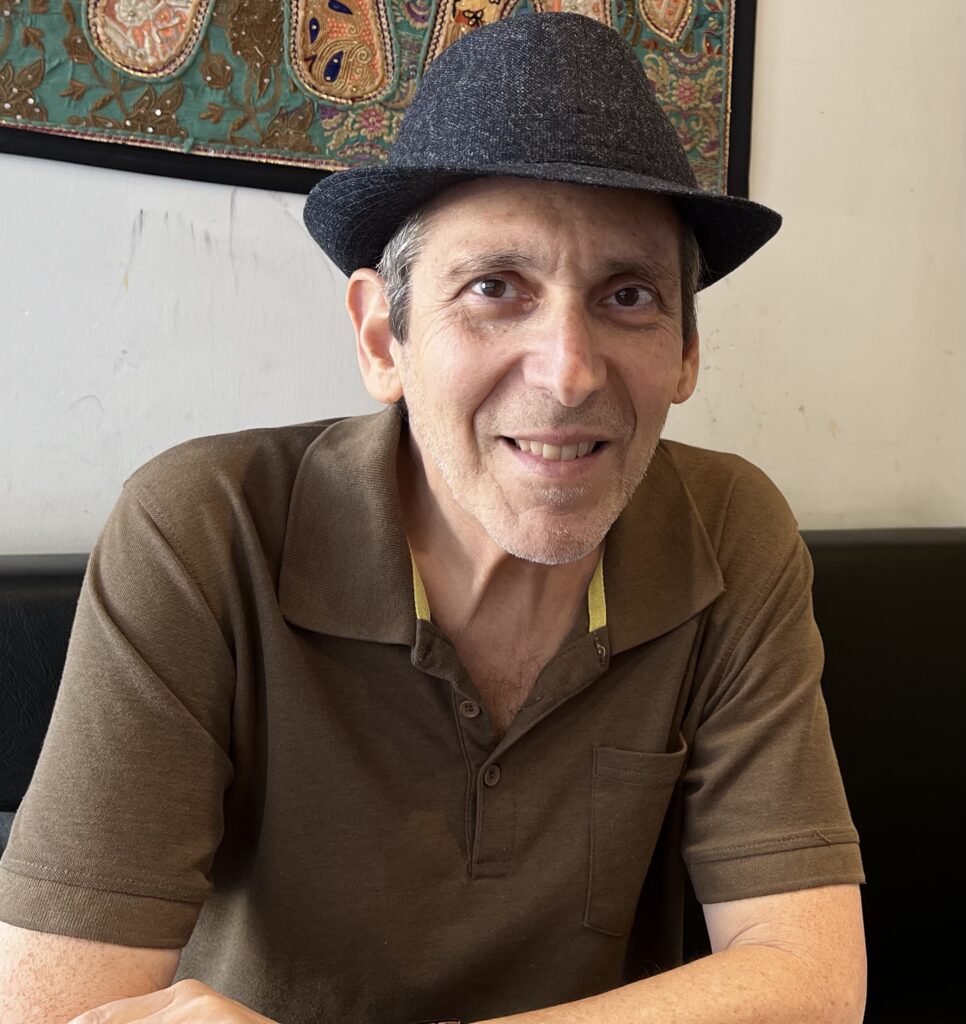I was prepared for my hair to fall out. Just not the way it started.
I had expected it to be in clumps. I’d be in the shower and a handful of hair would come off in my hands while I was rinsing off. Or, as Nurse Shlomit explained, I’ll start to see hair piling up on my pillow.
Instead, I was sitting having a bowl of soup when a single strand tentatively floated down from my head to the kitchen table. I touched my scalp and another wisp was launched airborne.
My hair loss started more with a whisper than a bang.
That I would lose my hair was a given when I started this latest round of chemotherapy to fight off an increasingly aggressive case of non-Hodgkin’s lymphoma. My journey started in 2018 and has comprised two brief remissions followed by relapses and several years of “watch and wait” (but do nothing for now), which is common when battling this typically slow-growing cancer.
But following the unexpected and rapid expansion of a tumor that threatened to compromise one of my kidneys and caused excruciating pain, my hematologist told me I had no choice but to address it without delay. No more tarrying was warranted.
My doctor’s treatment of choice: CAR-T. Which plunged me into a panic.
CAR-T is intense and riddled with risks. First, your T-cells are “harvested,” then sent to a lab in Europe where they’re re-engineered to produce proteins called chimeric antigen receptors (“CARs”) which, when injected into your body a few weeks later, recognize and bind to specific antigens on the surface of cancer cells to fight your particular disease profile.
When I first was diagnosed with follicular lymphoma seven years ago, the mantra was, “This is a chronic cancer, incurable but usually treatable. You won’t die from it.”
But on that day, after failing chemo, radiation and even that bispecific antibody I was so optimistic about, the prospect of CAR-T was, frankly, terrifying. Not the process itself – although that’s tough, too, including a three-week in-patient hospital stay while you’re monitored for potentially fatal side effects – but rather what CAR-T symbolizes.
It is in many ways the end of the road: If I were to fail CAR-T, all that’s left are clinical trials, which may or may not work, and new drugs in the pipeline that are not ready yet.
When CAR-T was first introduced, some people reportedly never relapsed at all. But we have more data today and, while upwards of 90% of patients go into remission after the treatment, for 60%, the cancer will be back after a year or two.
Given my track record, it’s a race I may have no choice but to run.
Then our HMO said no.
I had only failed two lines of “systemic therapy” (radiation doesn’t count). I needed to flunk out three times to be eligible for CAR-T.
Was I caught in a nauseating healthcare bureaucracy?
“We can do a bridging treatment,” my hematologist offered. “Two rounds of chemo, then a scan to see if it’s working. If the tumors are shrinking, we’ll continue through the full six cycles. If not, we stop; you’ll have officially failed a third line, and we go on to CAR-T.”
The “bridging chemo” she recommended is called R-CHOP. It’s the strongest, most toxic treatment one can get for my kind of lymphoma. It comes with a host of nasty side effects, including nausea, bone pain, fatigue, runny nose (apparently due to one’s nostril hair falling out), tummy troubles and possible infections. I started a few weeks ago and have gotten every single one of them.
As for my head hair, I know it will grow back, and this is just temporary. I nevertheless can’t deny my vanity. I’ve long been proud I never went bald. In college, I didn’t cut my hair for two years. I was happy during previous treatments that I didn’t present publicly as a cancer patient in a ski cap.
Now, there will be no hiding it.
“I’ve always found the Israeli-man-with-the-shaved-head look to be very sexy,” my wife, Jody, said.
I searched for a snappy rejoinder, but as I ran a hand through my hair, the follicles on my scalp ached, as if they were prepping to angrily disgorge any remaining locks.
Should I eschew brushing my hair, to preserve a clump here or there, for as long as I can? Or would it be better to bite the bullet and give myself a hipster buzz cut and buy a funky fedora or a hippie bandana – maybe even a fur shtreimel like the ultra-Orthodox?
“You should worry more about the cancer than your hair,” well-meaning friends will try to comfort you. But hair is a part of our identity, our relationships and culture.
The author Christopher Hitchens, who died in 2011 of esophageal cancer, writes in his book Mortality that, “I wasn’t quite prepared for the way my razor blade would suddenly go slipping pointlessly down my face, meeting no stubble.”
Nurse Shlomit’s prediction came true eventually: My pillow would be peppered in hair by morning, of which I had no choice but to lay in, as I was too exhausted to change the pillowcase.
Then the unexpected happened: my hair loss strangely stopped. Would I be left with just a partially bald new do? Or was this a brief respite before the recommencement of the main act?
I’m trying to stay positive, reassuring myself that if my hair is falling out – whether fully or not – the R-CHOP must be working. I’ll know in another few weeks.
In the meantime, how do you think I’ll look in this topper?
I posted about my hair originally at The Jerusalem Post.


